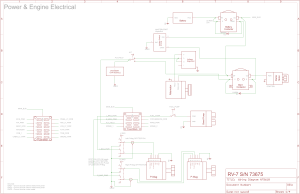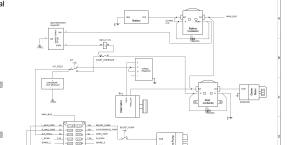DaleB
Well Known Member
I really want a keyed ignition/start switch that will disable all the bits needed to start the plane, but I'm not wild about paying over a hundred bucks for the usual mag/start switch, which has features I simply don't need. I plan to use P-mags, so I have a separate plan for the power and P-lead wires.
So I'm thinking this may be a solution. A marine type 3-position keyswitch (OFF/IGN/START) controls the main battery contactor and functions as a MASTER switch. The main bus from the master contactor supplies power via fuse blocks (or breakers if you prefer) to everything else. The starter contactor is controlled by the START position on the keyswitch.
There would be no traditional MASTER rocker or toggle switch. Just an ALTERNATOR switch. In case of an in-flight electrical emergency (like a fire) you could turn the keyswitch off, dropping power to everything -- but the P-mags would still fire under their own power until switched off.

Anyone see a problem with doing it this way? Anything I missed or got horribly wrong? This is by no means complete or finished, I am many moons out from doing the panel and FWF wiring. Just hashing out how I want things to work. I got a lot of ideas from the Nuckolls book, but I see those diagrams as a starting point rather than a final solution. This looks awfully simple, but I can't see that I'm giving up anything. And for the record -- the mission is day VFR (maybe day/night VFR depending on rules changes), and I'll have backup instrumentation for airspeed, altitude, and heading that don't rely on ship's power.
I'm open to comments and suggestions.
So I'm thinking this may be a solution. A marine type 3-position keyswitch (OFF/IGN/START) controls the main battery contactor and functions as a MASTER switch. The main bus from the master contactor supplies power via fuse blocks (or breakers if you prefer) to everything else. The starter contactor is controlled by the START position on the keyswitch.
There would be no traditional MASTER rocker or toggle switch. Just an ALTERNATOR switch. In case of an in-flight electrical emergency (like a fire) you could turn the keyswitch off, dropping power to everything -- but the P-mags would still fire under their own power until switched off.

Anyone see a problem with doing it this way? Anything I missed or got horribly wrong? This is by no means complete or finished, I am many moons out from doing the panel and FWF wiring. Just hashing out how I want things to work. I got a lot of ideas from the Nuckolls book, but I see those diagrams as a starting point rather than a final solution. This looks awfully simple, but I can't see that I'm giving up anything. And for the record -- the mission is day VFR (maybe day/night VFR depending on rules changes), and I'll have backup instrumentation for airspeed, altitude, and heading that don't rely on ship's power.
I'm open to comments and suggestions.





